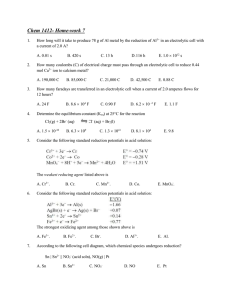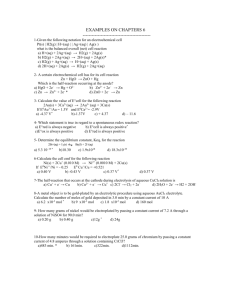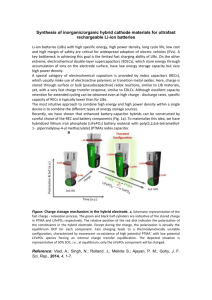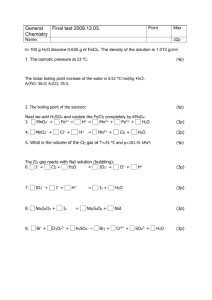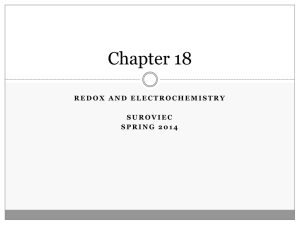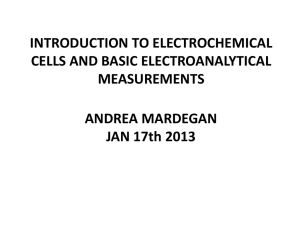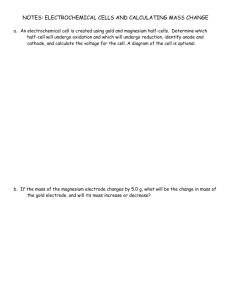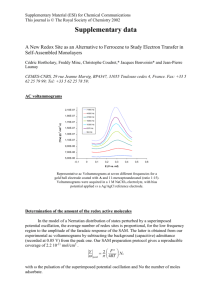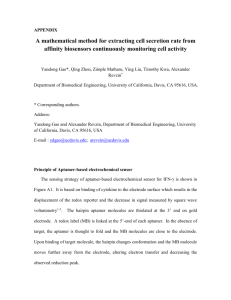NameNo:Homework 5 1- Complete and balance the following redox
advertisement
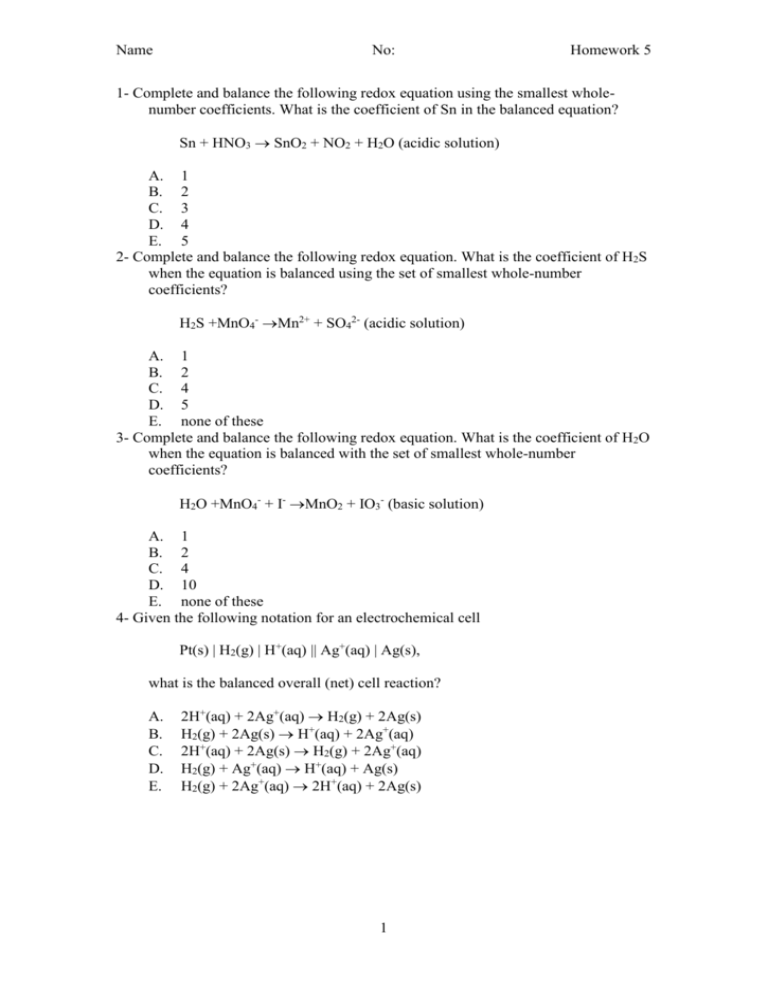
Name No: Homework 5 1- Complete and balance the following redox equation using the smallest wholenumber coefficients. What is the coefficient of Sn in the balanced equation? Sn + HNO3 SnO2 + NO2 + H2O (acidic solution) A. 1 B. 2 C. 3 D. 4 E. 5 2- Complete and balance the following redox equation. What is the coefficient of H2S when the equation is balanced using the set of smallest whole-number coefficients? H2S +MnO4- Mn2+ + SO42- (acidic solution) A. 1 B. 2 C. 4 D. 5 E. none of these 3- Complete and balance the following redox equation. What is the coefficient of H2O when the equation is balanced with the set of smallest whole-number coefficients? H2O +MnO4- + I- MnO2 + IO3- (basic solution) A. 1 B. 2 C. 4 D. 10 E. none of these 4- Given the following notation for an electrochemical cell Pt(s) | H2(g) | H+(aq) || Ag+(aq) | Ag(s), what is the balanced overall (net) cell reaction? A. B. C. D. E. 2H+(aq) + 2Ag+(aq) H2(g) + 2Ag(s) H2(g) + 2Ag(s) H+(aq) + 2Ag+(aq) 2H+(aq) + 2Ag(s) H2(g) + 2Ag+(aq) H2(g) + Ag+(aq) H+(aq) + Ag(s) H2(g) + 2Ag+(aq) 2H+(aq) + 2Ag(s) 1 Name No: Homework 5 5- Consider an electrochemical cell constructed from the following half cells, linked by a KCl salt bridge. an Al(s) electrode in 0.5 M Al2(SO4)3 solution a Pb(s) electrode in 1.0 M Pb(NO3)2 solution Which electrode is the anode? A. Al B. Pb C. neither 6- Consider an electrochemical cell constructed from the following half cells, linked by a KCl salt bridge. a Fe electrode in 1.0 M FeCl2 solution a Ni electrode in 1.0 M Ni(NO3 )2 solution When the cell is running spontaneously, which choice includes only true statements and no false ones? D. A. The nickel electrode loses mass and the nickel electrode is the cathode. B. The nickel electrode gains mass and the nickel electrode is the cathode. C. The iron electrode gains mass and the iron electrode is the anode. The iron electrode loses mass and the iron electrode is the cathode 2 Name 7- No: Homework 5 Calculate the value of Ecell for the following reaction: 2Au(s) + 3Ca2+(aq) 2Au3+(aq) + 3Ca(s) A. -4.37 V B. -1.37 V C. -11.6 V D. 1.37 V E. 4.37 V 8- For the reaction, 2Cr2+ + Cl2(g) 2Cr3+ + 2Cl-, Ecell is 1.78 V. Calculate Ecell for the related reaction Cr3+ + Cl- Cr2+ + (1/2)Cl2(g). A. 1.78 V B. 0.89 V C. -1.78 V D. -0.89 V E. none of these 9- The overall reaction 2Co3+(aq) + 2Cl-(aq) 2Co2+(aq) + Cl2(g) has the standard cell voltage Ecell= 0.46 V. Given that Cl2(g) + 2e- 2Cl-(aq), E = 1.36 V, calculate the standard reduction potential for the following the half reaction at 25C: Co3+ + e- Co2+ A. 1.82 V B. -0.90 V C. 0.90 V D. -1.82 V E. -1.36 V 10- Which statement is true for a spontaneous redox reaction carried out at standardstate conditions? A. B. C. D. Ered is always negative. Ecell is always positive. Eox is always positive. Ered is always positive. 3

